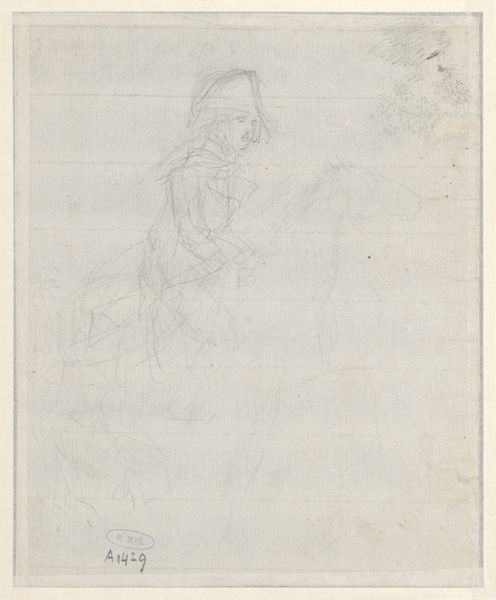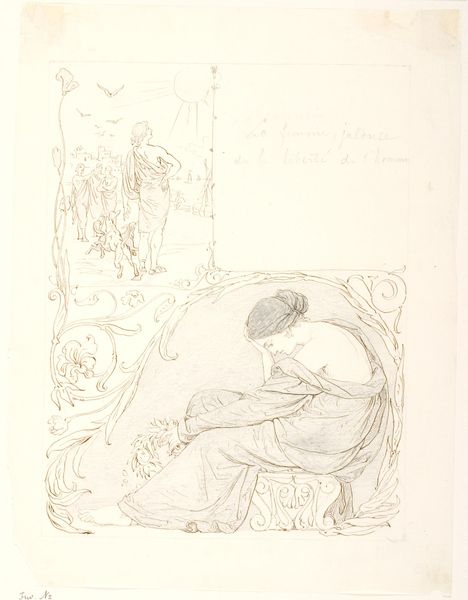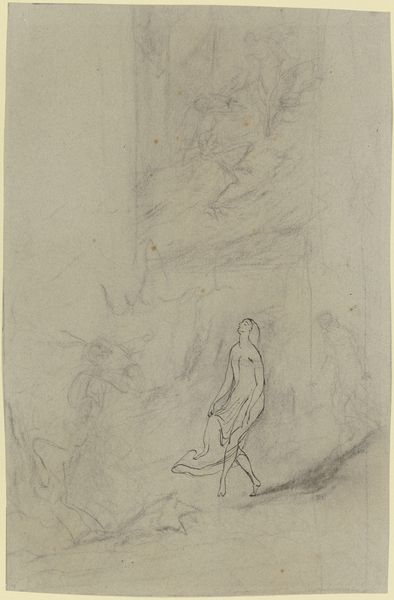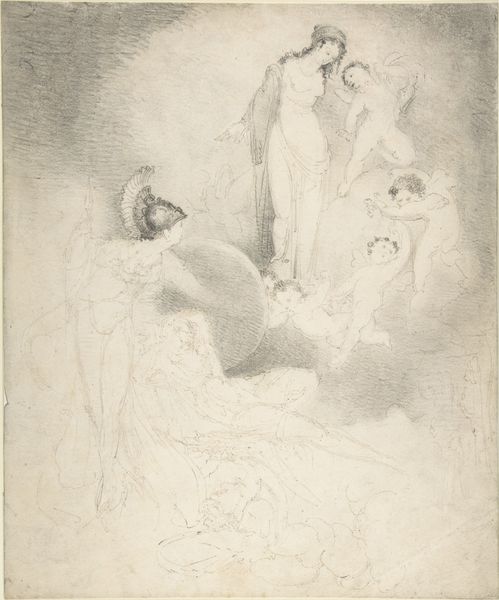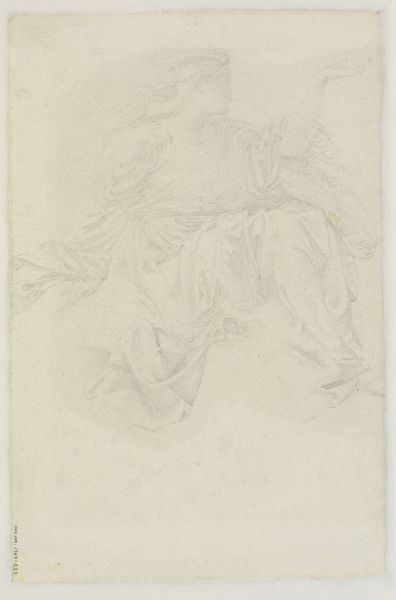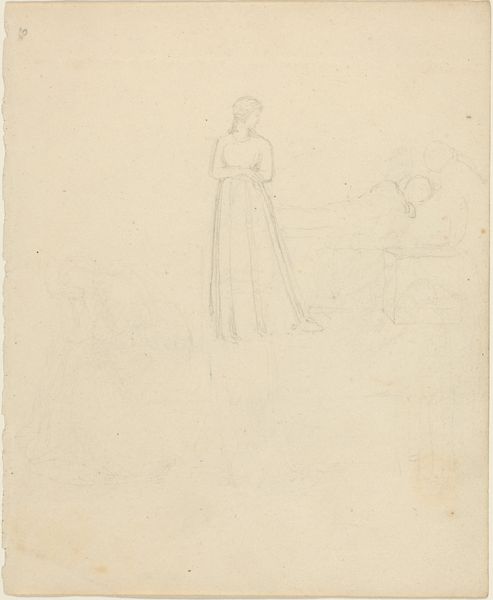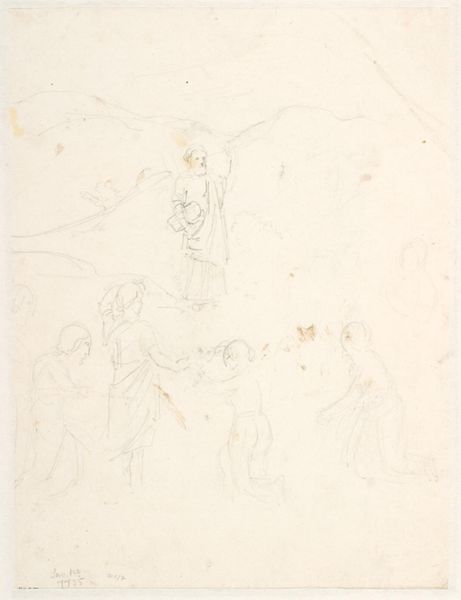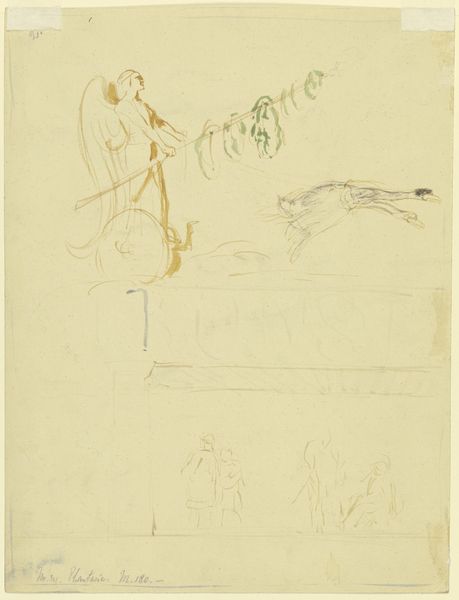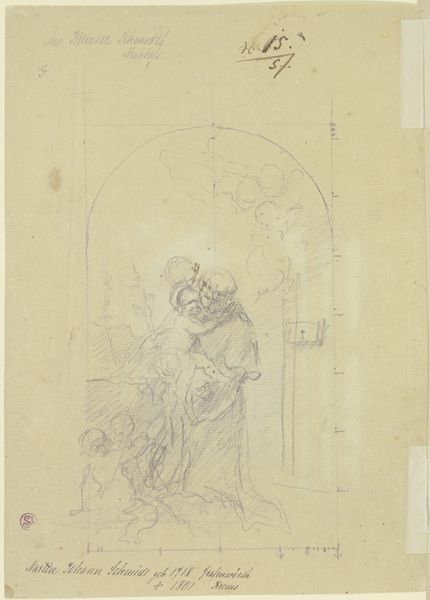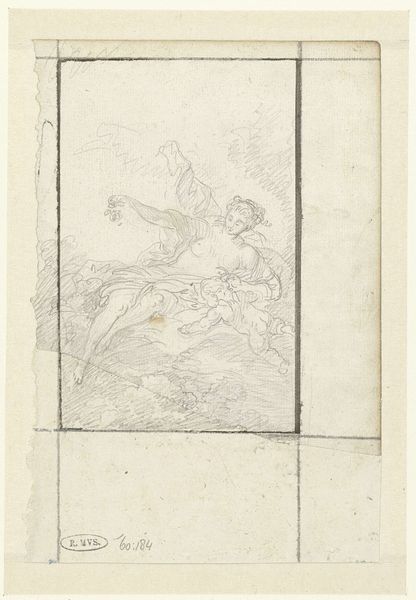
drawing, pencil
#
portrait
#
drawing
#
figuration
#
pencil
#
academic-art
Copyright: Public Domain
Hans Thoma made this drawing, Agony in the Garden, at an unknown date with pencil. Here we see a fairly conventional depiction of Christ’s agony: kneeling, gazing upwards, while his disciples sleep nearby. Thoma worked in Germany during a time when there was a debate raging about the role of art in the new German nation. Following unification in 1871, there was an effort to define a distinctive German identity, often drawing on folklore and romanticized visions of the past. Much of the art establishment, especially in the academies, favored grand historical or allegorical paintings that celebrated the nation's power. However, there were also artists who sought a more personal and spiritual form of expression. Thoma, while not directly challenging the establishment, aligned himself with those who valued individual experience and emotion over nationalistic spectacle. Religious subjects allowed artists to explore these themes in a way that resonated with the public's spiritual needs while remaining somewhat detached from the more bombastic displays of national pride. The work of art historians involves looking at the social forces that shape artistic production. We use archival research and examine critical debates to understand the meaning of art in its original context.
Comments
No comments
Be the first to comment and join the conversation on the ultimate creative platform.
